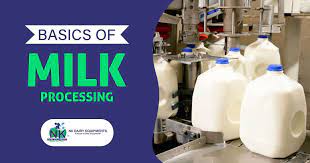Remote medical scribes are an essential element of the healthcare industry, and their work significantly impacts the quality of patient care. This article will discuss what remote medical scribes are and how they could help your medical practice run more efficiently.
Medical scribes provide medical recordkeeping and documentation services for physicians to help streamline their workflow. They allow doctors to focus on patient care instead of spending time writing, editing, and filing paperwork. Scribes work directly with clinicians to quickly document the details of a patient’s visit. This includes taking notes while examining patients, entering data into the patient’s electronic medical record (EMR), and transcribing dictated audio recordings.
Remote medical scribes make it easier for physicians to manage their practice by providing remote access to the EMR, decreasing paperwork, and streamlining documentation. Remote scribes can interact with clinicians in real time, allowing faster documentation and more accurate records. As remote scribes are not subject to the same geographical constraints as onsite scribes, they can offer better coverage for doctors with unpredictable schedules or multiple locations.
By using remote medical scribes, medical practices can benefit from increased efficiency, improved patient care and satisfaction, and reduced administrative costs. Scribes have been shown to reduce the time spent on documentation by up to 50%, freeing up valuable time for nurses and doctors should concentrate on providing excellent patient care. Furthermore, remote scribes can ensure that all patient encounters are recorded accurately and timely, improving the quality of medical records. Lastly, remote scribes can be a cost-effective way to manage documentation, as they are typically paid hourly and do not require the exact overhead costs associated with employing full-time staff.
Overall, remote medical scribes can be valuable to any medical practice. They offer numerous benefits that can help streamline workflows, improve patient care and satisfaction, and reduce administrative costs.
Remote medical scribes: A Must For Medical Practices Looking To Improve Documentation Quality.
Remote medical scribes have become a necessary component of many medical practices looking to improve documentation quality. Medical practices can utilize the best scribe talent available by providing remote scribes while improving patient care and overall efficiency. Remote medical scribes offer many benefits to medical practices, such as improved documentation accuracy and completeness, faster patient visits due to remote scribes’ ability to work at a distance, and reduced overhead costs for the practice. Furthermore, remote medical scribes can help free clinicians from tedious tasks such as documentation or data entry so they can focus on providing the best patient care. With remote medical scribes, clinicians can focus on what they do best—providing quality patient care.
Remote medical scribes are also beneficial because they can provide documentation support during off-hours or when the demand for physician services is at its peak. By utilizing remote medical scribes, physicians can free themselves from having to stay late to complete paperwork, allowing them to spend more time with their patients. Remote medical scribes can also be used as a way to supplement existing staff and help reduce inefficiencies associated with traditional onsite scribe services.
The remote medical scribe industry is quickly growing and becoming essential to many medical practices. By utilizing remote scribe services, medical practices can improve documentation quality while reducing the paperwork burden on clinicians and staff. In addition to increasing patient satisfaction by providing faster visits, remote scribes can also help reduce overhead costs associated with traditional onsite scribing services. With remote medical scribes becoming increasingly popular among medical practitioners, practices must take advantage of all the remote scribing services available to them. By utilizing remote medical scribes, medical practices can ensure quality documentation and improved patient care.
Remote medical scribes
Remote medical scribes are health professionals who provide remote scribing and transcription services offered to hospitals, physicians, and other healthcare professionals. They use remote communication technology to record and transcribe patient information, which can then be used to provide more accurate and timely care. Remote medical scribes can be an invaluable resource for doctors and other healthcare providers who need to track patient information but lack the resources or time to do so themselves.
How to train remote medical scribes
Remote medical scribes are a relatively new and expanding field demand.
The need for remote scribes has grown as the healthcare industry moves towards remote consultations and treatment.
Training remote medical scribes can be complex, as There are numerous approaches you can take.
Some of the best will be covered in this article. Ways to train remote medical scribes to prepare them to work in this growing field.
The first step to training remote medical scribes is to ensure they have the right qualifications.
This includes having an excellent working knowledge of medical terminology, basic computer skills, and an understanding of remote technology.
It is also essential for remote scribes to be familiar with the laws and regulations related to remote medicine in their region.
Once remote medical scribes meet the qualifications, they should be trained on specific tasks.
This includes documenting patient visits, entering patient data into electronic health records (EHRs), scheduling appointments, and preparing documents for remote consultations.
It is also essential to provide remote scribes with training in communication skills, as they will need to effectively interact with remote healthcare providers and patients.
Finally, remote medical scribes should receive regular ongoing training to keep up with changes in the remote health landscape.
This could include learning new remote technology or understanding new regulations related to remote medicine.
By following these steps, employers can ensure that remote medical scribes are trained and knowledgeable enough to be successful in the remote healthcare field.
In conclusion
Remote medical scribes can help your practice by taking on some documentation duties, making life easier and faster for you and your patients. With remote medical scribes, your practice can improve efficiency and accuracy while ensuring that all documentation is completed promptly. By having remote medical scribes on your team, you can ensure that the patient experience is improved and that your staff has more time to focus on providing top-notch care. Ultimately, remote medical scribes are a great addition to any medical practice, providing convenience and cost savings in the long run.





